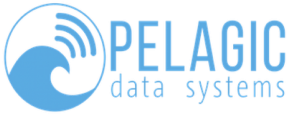February 8, 2018 — It’s 10 p.m. Do you know where your shipments of iced-down, black sea bass are? Or perhaps you want to check on the status of the longline boat that is catching your carton of golden tilefish from the 500-foot depths of the Hudson Canyon, located about 80 miles south of Montauk? For those who demand the freshest, most sustainable seafood, and partake in the increasingly popular and expanding Montauk-headquartered Dock to Dish community-supported fishery program, keeping an eye on your seafood order is a simple mouse click away.
“More and more people want to know where, when, and how their fish are caught,” explained Sean Barrett, a fisherman and restaurateur who founded the cooperative fishery program in 2012. “Our motto is ‘know your fisherman’ and that has not changed. Members of Dock to Dish can check in real time the status of their catch from the beginning of the fishing trip all the way until it is delivered by hand right to their doorstep. It’s just one of the many enhancements we have made since we started.”
This year Mr. Barrett hopes to improve the fishery marketplace by having the world’s first live tracking dashboard so that end consumers on land can monitor hauls of wild seafood from individual fishermen at sea in near-real time. Named Dock to Dish 2.0, the new technology bundle was created in partnership with several fish tracking companies, including Pelagic Data Systems, Local Catch, and Fish Trax. Once completed, the bundle will be open-sourced, meaning it can be replicated and used by all independent small and medium-scale fisheries operations around the world.
“Dock to Dish 2.0 is the first public-facing system to ever combine vessel and vehicle tracking with geospatial monitoring technologies on an interactive digital dashboard,” Mr. Barrett explained last month as he unloaded a catch of tilefish just outside the kitchen door of Nick and Toni’s, one of the first members of Dock to Dish’s restaurant-supported fisheries program. Fishing boats will be outfitted with solar-powered automatic data-collection monitors and application-specific wireless sensors.
Read the full story at the East Hampton Star


